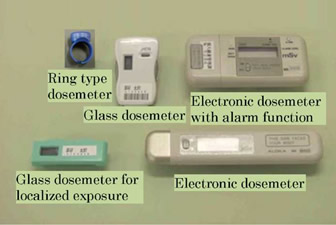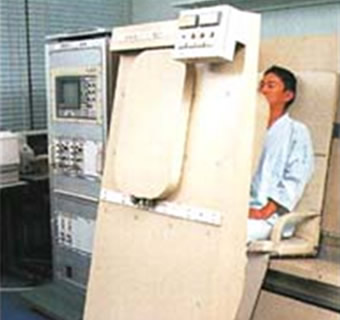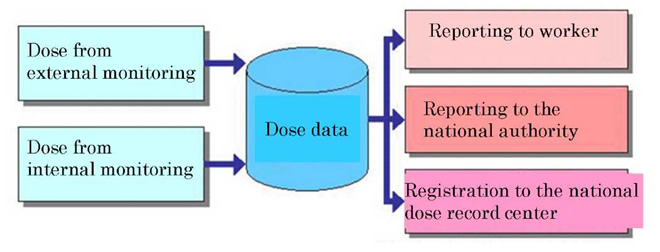Individual monitoring for external exposure
Workers at our institute are monitored for individual external exposures to radiation using radio-photoluminescence (RPL) glass dosemeters. The occupational dose for whole-body external exposure is evaluated every 3 months for each worker and is evaluated every month for pregnant women. For monitoring extremities such as fingers ring-type dosemeters are used.

Personal dosementers used at NSRI
Individual monitoring for internal exposure
or individual monitoring of internal exposure, in-vivo counting and in-vitro methods are used. In-vivo counters are instruments that measure the internal radioactive burden by detecting gamma or X-rays originating inside the human body. In-vitro bioassay methods evaluate the radioactivity level in excrement samples such as urine by detecting alpha or beta rays emanating thereof. Internal dose is assessed by calculating the intake activity using both measurement results.

Whole body counter

Chemical analysis of urine samples
Report and recordrecording of dose data
Dose data from external and internal monitoring are recorded as individual or group dose. Individual dose is reported to the workers and their employers.

Dose data for radiation workers must be registered with the national dose record center, authorized by the government, as
defined in Japanese law. Registered dose data are used for the following purposes:
・Referring to worker dose records and ensuring that their doses are below the dose limit.
・National project -“Epidemiological study of radiation workers in nuclear facilities”
・Statistical data analysis of occupational exposure for radiation workers.







